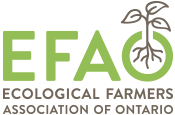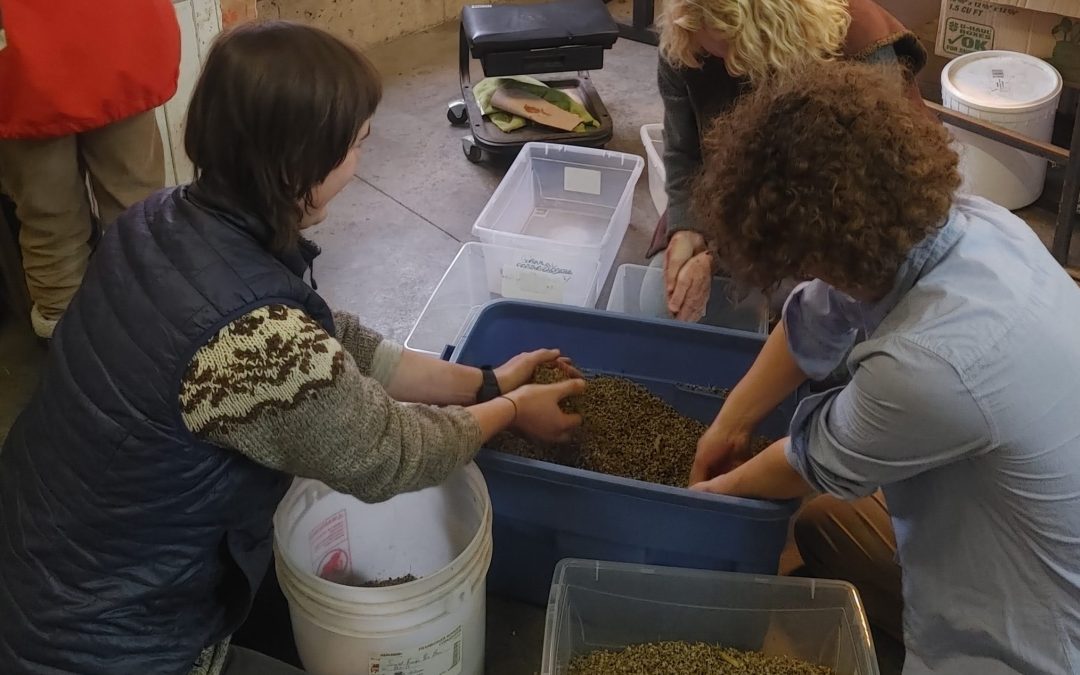by Theo Wiederkehr of Carrick Seeds
Some of the things I most enjoy about gardening are the endless variety of creatures which I work with, and the varied tasks I do as I work with them. As a seed grower, my appreciation keeps growing for just how important it is to understand the background of our plants – where they were domesticated; what roles they played in their domesticators’ culture; how they are related; how they reproduce; how they interact with other plants, weather, insects, bacteria, and fungi. All of these are relevant to the gardener trying to help them complete their life cycles in ways which produce good seed to become the next generation.
I started a small seed company, Carrick Seeds, in 2021, thinking that I probably knew enough about all of those topics to get started. That seems to have been the case; however, my first year of running the seed company has shown me that there is still much more to learn! But my learning has been eased somewhat thanks to a new opportunity in EFAO.
Last winter, Rebecca Ivanoff arranged a mentorship for me through EFAO’s Seed Program with Kim Delaney at Hawthorn Farm Organic Seeds. I was eager for the opportunity. As I started my business I had many questions, and the unique niche of small-scale seed work makes it hard to find people with the experience and perspective needed to help answer them. Also, I have found that some companies’ seed collections just excite me, as I see that we are choosing crops following similar criteria; they are the ones to whom I look for ideas and possibilities for what I might like to try. Hawthorn Farm is one of those companies. A number of my family’s favourite varieties (and some of the first crops for which I learned to save seed) come from them. An additional benefit is that Hawthorn Farm is my nearest neighbouring seed company.
For me, one of the best parts of the mentorship was simply being able to see what another seed company looks like on the ground. Often, where and how the seeds are grown, processed, and packed is information which stays hidden somewhere behind the pages of the seed catalogues. Many helpful resources to learn how to save seeds are available; however, most of these are designed either for the gardener saving a bit for personal use, or for commercial growers working with substantially larger quantities of seed than I do. Also, most of these talk just about the seed growing, and don’t cover other aspects of running a complete business around seed. So being mentored by Kim has been very helpful, not least in just having a chance to see how a relatively small seed company runs, both in the garden and in the office. Each time I visited, I would also bring a long list of questions which we would go through, covering many topics from how to arrange seed-growing contracts to where to buy the little envelopes we all pack seed into.
While it might have been nice to know more before starting, I think it was good to do this learning as a mentorship instead of an internship. Some of the questions I brought were things which came out of my first season of selling, and I don’t think I would have thought to ask them if I were not growing and selling seeds. It was also helpful to do this just as I was starting, because it let me incorporate things I learned while I am still new and flexible enough to really benefit from them.
Less formally, over the season I gained a greater appreciation for how our values, interests, and goals affect how we select what to grow and where we focus. At the start of the year, I felt a bit bad about coming as “competition” for Kim. But I realized that while there is overlap in our collections, I will never become a duplicate of Hawthorn Farm, because we are doing somewhat different things. They focus on certified organic vegetables; I do not have organic certification and prioritize staple crops. The difference can be illustrated by observing that they have twenty varieties of tomatoes, and I have twenty varieties of dry beans! I like this difference because it means that we don’t step on each others’ toes, but also because it improves the agrobiodiversity we offer to our region.
Over the course of this mentorship, I have also gained a greater appreciation for how important (but by no means unique) any one person is to the story of each of the varieties we grow. As a seed producer, I like to see myself as a valuable and necessary part of helping gardeners access the crops they want and need to grow. In some cases, rare varieties are commercially available from only one source. I feel I am playing a small but important part in maintaining agrobiodiversity when I keep one of those rare varieties available. But I am only one link in long and complex chains of growers who have come been before me, stewarding and selecting the ancestors of my crops back through the centuries and across continents. Sometimes those people dramatically altered the crops we have through intentional breeding or noticing and preserving mutations and accidental crosses; often they just recognized a good thing and maintained it.
In our time, it is becoming increasingly clear that how we work with our domestic species, and which species and varieties we choose to grow, is linked to larger regional and global patterns and crises. As a young gardener having recently entered the world of seed growing, I hope to do my part to help suitable seeds to be available to people, to ease adaptation to the changing conditions we face. In this mentorship, and in my own work with Carrick Seeds, I have become more aware of the interconnections which surround and flow through seeds; and for that I am grateful.

